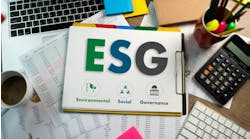ATLANTA — U.S. Environmental Protection Agency Region 4 announced the release of the Sustainable Design and Green Building Toolkit for Local Governments.
The toolkit is designed to assist local governments in identifying and removing permitting barriers to sustainable design and green building practices. It provides a resource for communities interested in conducting their own internal evaluation of how local codes/ordinances either facilitate or impede a sustainable built environment, including the design, construction, renovation, and operation and maintenance of a building and its immediate site.
The Agency’s Regional Resource Conservation and Recovery Act Division and Water Protection Division and Pollution Prevention Office collaboratively developed the toolkit, with support from the EPA Green Building and Smart Growth Programs, the Office of Solid Waste and Emergency Response’s Innovations Workgroup, and many external partners.
The Toolkit contains an Assessment Tool, a Resource Guide, and an Action Plan for implementing changes to the permitting process. The Assessment Tool is designed for local governments to review their permitting process and identify barriers or resistance to sustainable design practices. The Assessment offers a green/yellow/red progress indicator for the user. Green indicates that the community is doing well in encouraging sustainable design through its codes and ordinances. Yellow indicates that there is room for improvement within the existing permitting process. Red indicates that the community may want to identify the cause of the barrier and remove it from the process.
The toolkit, for example, has checklists for innovative plumbing systems. It asks local authorities if the use of high efficiency and innovative plumbing fixtures and fittings, such as WaterSense labeled fixtures and fittings, is encouraged to reduce water consumption. It suggests as potential tools and techniques, the requirement for WaterSense homes; incentives, such as rebate programs or property tax forgiveness; an upgraded plumbing code for high efficiency fixtures; and composting toilet information.
It also asks local code writers if there are provisions in place to encourage or mandate individual metering in multi-family buildings; and if the reuse of air conditioning condensate water is encouraged. It also prompts local authorities on rainwater harvesting and graywater use, and on onsite wastewater treatment.
Ideally the actions are both permitted by the local code and incentivized. The worst possible scenario is if the conservation measures are explicitly prohibited by code.
The toolkit can be downloaded by clicking here. (Opens as .pdf)
The Resource Guide contains links to existing organizations and documents that will help communities learn more about each category in the Assessment Tool. Additionally, the Resource Guide provides users with information that can aid in making codes and ordinances more compatible or supportive of sustainable design and green building. If green tools or techniques are not permitted or encouraged, this information can help local governments implement changes to allow these techniques.
The Action Plan section will help communities develop their own tailored approach for implementing the necessary regulatory and permitting changes to allow for more sustainable design and green building practices.
Latest from Green
Latest from Green
Innovations in Graywater Treatment Technologies
April 22, 2024
Voice your opinion!
Voice your opinion!
To join the conversation, and become an exclusive member of Contractor, create an account today!
Sponsored Recommendations
Sponsored Recommendations

